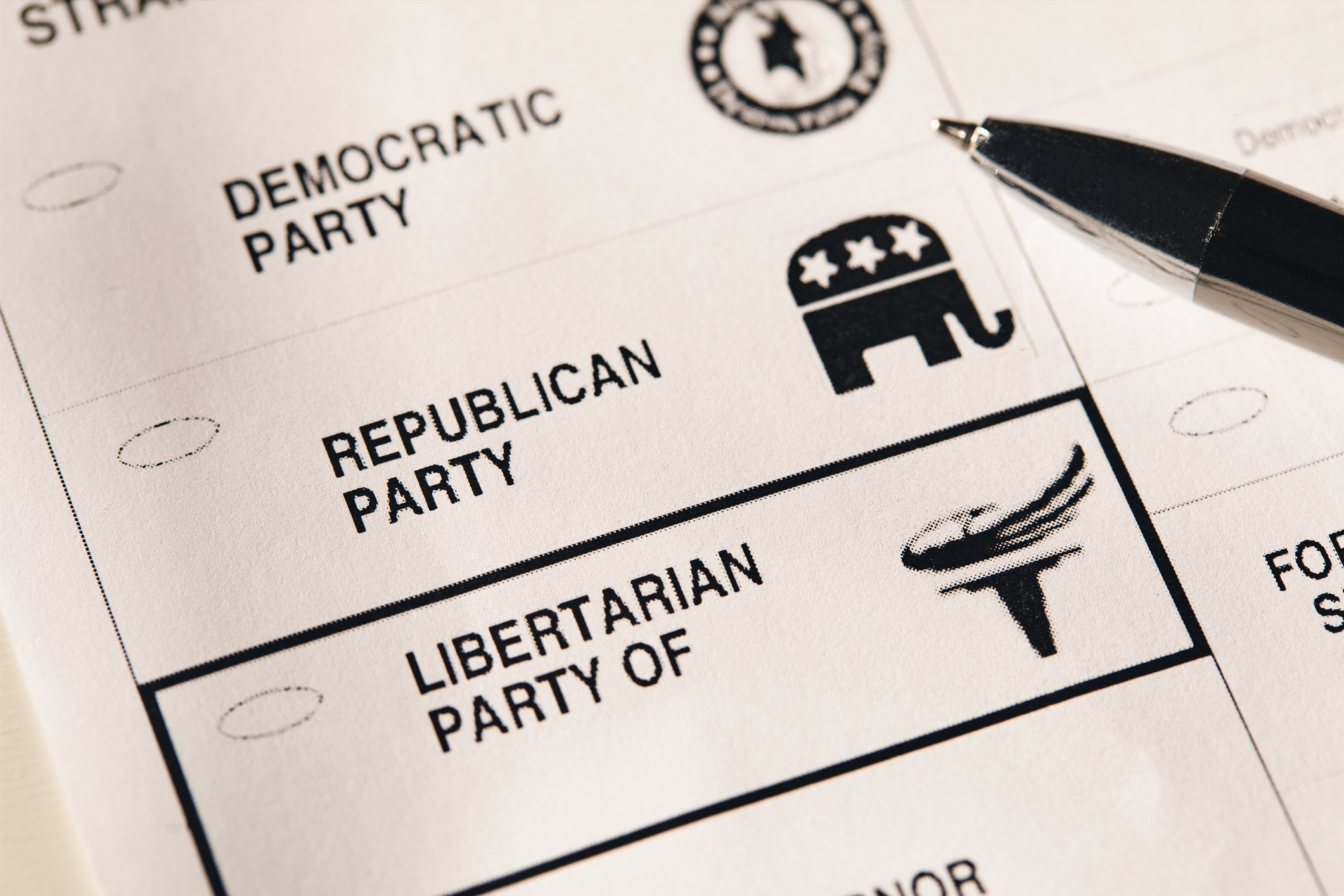The history of third parties
Third-party presidential candidates may jump into the 2024 race. How have they affected elections in the past?

Third-party presidential candidates may jump into the 2024 race. How have they affected elections in the past? Here's everything you need to know:
How many 'third' parties exist?
More than 50 appeared on state ballots last November, including the Reform, Libertarian, Socialist, Natural Law, and Green Parties. But since 1854, when the Whig Party imploded over the issue of slavery, every U.S. president has been either a Republican or a Democrat. Because the Electoral College is a winner-take-all system, it strongly reinforces the binary nature of U.S. politics: Every state but Maine and Nebraska awards all its electoral votes to a single candidate. That greatly reduces the chance a third-party candidate could amass the 270 electoral votes needed to win. Democrats and Republicans, meanwhile, have automatic ballot access, huge fundraising machines, and high name recognition. For these reasons, the two dominant parties have received at least 94% of votes in all but four presidential elections over the past 100 years. Periodically, outsiders running on other party lines have intentionally or unintentionally served as spoilers, peeling off enough votes to change the winner of the election. With more Democrats than Republicans saying they're open to third-party candidates in 2024, President Joe Biden is particularly vulnerable to the spoiler effect. "Third-party candidacies do not have much of a record of winning," said Princeton University historian and political analyst Julian Zelizer, but they can "take enough votes from a handful of voters within a handful of states to have a dramatic impact."
Which have come closest to winning?
Since 1900, four third-party presidential candidates have received double-digit shares of the vote. Only one of them came in second: Theodore Roosevelt, who as president threw his support behind his secretary of war, William Howard Taft, in 1908 but ran against him four years later. In response to Taft's rightward drift, Roosevelt formed the progressive Bull Moose party. In the 1912 race, Roosevelt drew 27% of the vote, beating out Taft and Socialist Eugene V. Debs. The split of the Republican vote enabled Democrat Woodrow Wilson to win easily, with 42% of the vote. The last third-party candidate to win any Electoral College votes was segregationist George Wallace, who picked up five Deep South states in 1968. In 1992, billionaire Reform Party founder Ross Perot made the strongest third-party showing since Teddy Roosevelt, with 19% of the popular vote.
The Week
Escape your echo chamber. Get the facts behind the news, plus analysis from multiple perspectives.

Sign up for The Week's Free Newsletters
From our morning news briefing to a weekly Good News Newsletter, get the best of The Week delivered directly to your inbox.
From our morning news briefing to a weekly Good News Newsletter, get the best of The Week delivered directly to your inbox.
Why do they run?
A plurality of U.S. voters consider themselves political independents, and third-party candidates say they deserve options outside the two-party duopoly. Sometimes, after running, their ideas are incorporated into major-party agendas. Perot's advocacy for balancing the budget, for example, seems to have informed Bill Clinton's ultimately successful push to eliminate the annual deficit as president. But third-party candidates' campaigns can wind up hurting the causes they claim to represent. In 2000, Green Party nominee Ralph Nader won 97,488 votes in Florida, a state Democrat Al Gore lost by 537. The following year, President George W. Bush pulled the U.S. out of the Kyoto climate protocol. Another Green Party candidate, Jill Stein, met with Vladimir Putin at a 2015 Moscow gala sponsored by Russian propaganda outlet RT and claimed Hillary Clinton would plunge the country into nuclear war. Stein played a significant role in Clinton's defeat: The votes Stein received in crucial swing states Michigan and Wisconsin in 2016, mostly from young progressives, exceeded Donald Trump's margin of victory in each state.
Which parties will participate next year?
The Greens already have their candidate: activist and former Harvard University Professor Cornel West, a socialist who accuses "plantation" Democrats of taking the Black vote for granted. There's also No Labels, a group of centrist Republican and Democratic lawmakers formed in 2010. Its members have secured ballot access in 10 states, intend to raise $70 million, and say they will announce by March whether they will launch a bipartisan "unity ticket." Their pool of potential candidates includes Sen. Joe Manchin (D-W.Va.), Gov. Chris Sununu (R-N.H.) and Maryland's former Republican Gov. Larry Hogan. No Labels' founders insist they do not intend to act as spoilers. Instead, they say, their goal is to offer "an insurance plan," a chance to unify the electorate in case "the two major parties select candidates the vast majority of Americans don't want to vote for."
Could that happen?
Polls find that most Americans do not want either Biden or Trump to run again. But analysts are skeptical of No Labels' claim of having a path to victory. Instead, its candidate could ensure that no candidate gets 270 Electoral College votes, sending the choice of president to the House of Representatives, which has a Republican majority. Former GOP strategist and Lincoln Project co-founder Rick Wilson argues that No Labels' "centrist do-gooder" positioning is deeply misleading. "What could possibly go wrong?" he asks. "The thing that could go wrong is the election of Donald Trump."
The first billionaire populist
Ross Perot loathed the political establishment. The eccentric computer services magnate gained media attention by financing rogue attempts to get medicine to POWs in Vietnam and his employees out of 1979 Iran. In his largely self-funded, populist presidential campaign in 1992, Perot vowed to balance the budget, and advocated hard-line conservative policies on immigration and drugs and relatively liberal views on abortion and gay rights. He trash-talked his opponents, espoused conspiracy theories and vowed to "clean out the barn" in Washington, D.C. He also attempted to bypass the news media through 30-minute infomercials explaining his policies and a proposal for televised call-in town halls. Perot briefly surged to first in the polls; after briefly dropping out of the race, he ended up with 19% of the popular vote, enabling Bill Clinton to beat incumbent President George H.W. Bush and win the presidency with 43%. Many Republicans questioned whether Clinton could claim to have a "mandate" to govern with a minority of votes. "You take [Perot] away and we win," George H.W. Bush's advisor Sigmund Rogich later complained. "Those votes weren't Clinton votes, those were our votes."
A free daily email with the biggest news stories of the day – and the best features from TheWeek.com
This article was first published in the latest issue of The Week magazine. If you want to read more like it, you can try six risk-free issues of the magazine here.
-
 The best homes of the year
The best homes of the yearFeature Featuring a former helicopter engine repair workshop in Washington, D.C. and high-rise living in San Francisco
-
 Critics’ choice: The year’s top 10 movies
Critics’ choice: The year’s top 10 moviesFeature ‘One Battle After Another’ and ‘It Was Just an Accident’ stand out
-
 The small Caribbean island courting crypto billions
The small Caribbean island courting crypto billionsUnder the Radar Crypto mogul Olivier Janssens plans to create a libertarian utopia on Nevis